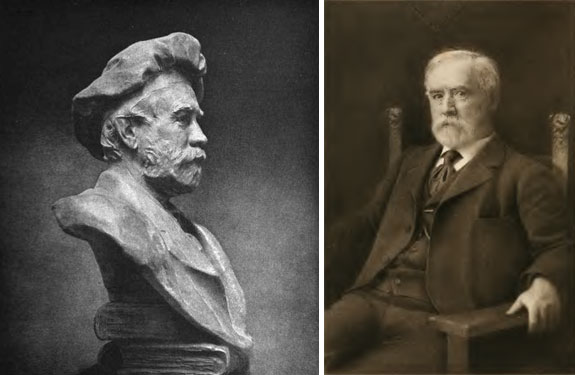February 16
On February 16, 1914, died the most honored printer in the United States—Theodore Low De Vinne.
With no formal education, De Vinne was the recipient of the degree of Master of Arts from both Yale and Columbia Universities. The citation at the Columbia convocation was read by President Low: “As you are thus the master of the art preservative of all arts, and because you have shown yourself a scholar in everything related to it, I admit you to the degree of Master of Arts of this University.”
From the time of his apprenticeship as a compositor in Newburgh, New York at the age of 14, De Vinne had loved the printer’s craft, and in a period when the industry was completely involved in the problems of mechanization brought about by the industrial revolution, he brought to it the idealism which it so badly needed. He became a master craftsman in the production of printing, their philosophical standards. His fellow printers were impressed by his great success as a master printer and by his technological accomplishments, even though many of these men could not quite understand his continuing motivation to interest them in the more aesthetic values of printing.
De Vinne’s first books were on the subject of costs in the printing plant. His system of pricing profitably was adopted by many other plants. His technical innovations included the introduction of hard packing and more rigid impression of his cylinder presses. He began experiments with ink and paper which resulted in the formulation of inks for high speed printing and in the first coated paper to be used for magazine printing. He was one of the first printers to print with half-tone engravings. The Century magazine, for which he was the printer, was considered to be the best printed periodical in the world.
As a founder of the United Typothetae of America, now the Printing Industries of America, he was active in promoting better relationships among the owners of plants and in bringing about the cooperation of printers with their suppliers—such as equipment manufacturers, paper mills, engravers, etc. For this act alone De Vinne should be honored, but in addition his contributions as a scholar are of the first rank.
At this time the only literature of printing generally available was the printer’s manual, essentially practical in nature. De Vinne became a student of typography through reading, finding it necessary to study several languages in order to understand source material, which was then almost exclusively of European origin. His great work, The Invention of Printing, published in 1876, was followed by a four volume manual, The Practice of Typography, 1901-04; Title Pages as Seen by a Printer, 1901; and finally Notable Printers of Italy in the Fifteenth Century, 1910. The last two volumes were printed by De Vinne for the Grolier Club. of which he was a founding member. They represent De Vinne at his best both as a printer and as an exponent of the history of his craft.
